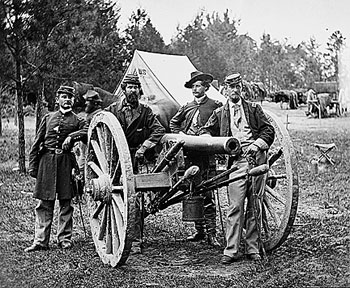The American Civil War
Whaling enjoyed many prosperous years in the early 19th century. It was well established as a national industry and American ships could be found in all the seas. New Bedford replaced Nantucket as the busiest U.S. whale port. Profits remained high in the 1850s even thought an increasing number of Americans found cheaper alternatives to whale oil to light their homes and streets. When war seemed likely, whaleship owners once again dreaded wartime disruptions to their industry.
At the outset of the Civil War, the Confederate Navy planned to strike Northern commerce "with all possible force." Many whaling vessels were out at sea when the war began, some of them years from home and far away from the protection of the American Navy. The nature of whaling itself made whaleships easy targets for the Confederate Navy. Other ships of commerce were always en route from one place to another but whaling fleets had to gather where the whales were, which meant cruising within small, well-known parts of the oceans where they would stay for weeks at a time while the whaling season lasted. These clusters of whaleships naturally attracted the attention of Confederate navy cruisers that struck with devastating consequences. During the four years of the Civil War, forty-six whaling vessels with a combined total of over ten thousand barrels of whale oil were destroyed

Library of Congress